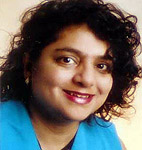
INTRODUCTION TO YOGA – PART I

The widespread popularity of yoga has enriched the lifestyle of countless individuals. Its global acceptance has also led to the belief that yoga is a form of physical exercise used to aid various conditions such as stress, pain, weight-loss, pregnancy, depression and sometimes it is regarded as a good means to attain a beautiful physique. Yoga is also used to improve an individual’s performance in various professions: You can find classes such as yoga for managers, yoga for drivers, yoga for deep-sea divers, yoga for tennis players, etc. As a matter of fact, yoga can improve the performance of a manager. It alleviates stress, reduces pain, increases the lung capacity of divers; helps a driver to be more alert and peaceful while driving. However, yoga is actually not just a tool to improve a state of being or merely a physical exercise regimen. When we practice yoga, it does not just affect one aspect of our being but our whole being.
Historians express different views about the time when yoga came into existence. Some state that it is 5,000 years old. Others believe it may be about 3,000 year old. Yogis state that yoga came from Lord Siva himself who is the Yogi of all Yogis. In any case, we can surely say that it is the oldest practical system developed in India that has been practiced and examined thoroughly by humans for humans. Yoga is therefore the most ancient gift of India to the world that has always stood the test of time.
The term yoga is derived from the Sanskrit root “yuj”, which means “to join,” “to yoke,” “to control” ... This implies that yoga helps us to focus and balance our mind to feel inner peace. The harmony within unites our individual self jivatman with our divine Self or paramatman. So, yoga is unity with divinity. Yoga can affect the practitioner in a threefold way:
* It adds a feeling of inner and outer harmony to our life. * It evokes our hidden qualities. * It unites us with our true self and unfolds a cosmic consciousness.
We can experience the wonderful effects of yoga even if we practice a little on a regular basis. You can feel blissfully relaxed like never before; physical pain can be reduced or eliminated, you can have more physical energy, your mind can feel clear, your immune system can improve, you can gain more self-confidence, and you can improve your ability to concentrate. You can develop these qualities even if you only practice for an hour once a week and by incorporating some simple breathing, stretching and relaxation exercises into your daily life.
If the goal is to attain more than the harmony of your body, mind and spirit, you need to intensify your practice. The masters of yoga have always stated that there is a great reservoir of hidden qualities inherent in all beings. An intensive practice of yoga can help unfold your intuitive and creative faculties. Some people discover artistic talents that they had never thought they had. Others feel a great power of their mind, develop charisma, and their personal aura and outer appearance improves. Yogis can however go even further and perceive the life force or prana within their body and also within others. They can perceive how prana circles in the chakras or the energy centers in the subtle body and how it flows through the nadis or the channels in the subtle body. Furthermore, yogis can control the flow of prana consciously. Gradually a yogi develops psychic and telepathic powers and can transmit prana on to others as well. This can reinforce the healing process in another person.
Although the development of our talents and the invocation of our hidden qualities are wonderful, yogis warn us from being carried away by them. They advise us not to over-value these potentials because that would have a negative effect on our ego and prevent us from developing ethical values.
They declare that the most important goal in yoga is the realization of our true Self. Yogis call this state as the unity with divinity and cosmic consciousness. Therefore, the state of yoga is achieved when we are united with God. The realization of oneness with divinity unfolds feelings of true love, compassion, unity in the diversity, a perception of a divine connection that we share with all beings, and an experience of a pure state of being equipped with perfect knowledge and eternal bliss.
The attainment of the above qualities depends on how we practice. In yoga, the individual decides how far he or she wishes to go. We can all improve our lives by practicing yoga’s wide range of exercises and forms of practice. A person who only seeks relaxation can achieve this within less time and with little effort. One, who desires more, has to practice more. Yoga is not a magical pill but a practical method that leads you to your desired goal as long as you have patience and practice systematically on a regular basis.
To be continued.
Deepa Malavalli is a teacher of yoga and meditation from the Sivananda Yoga lineage. She teaches Writing and Advanced Grammar at the USF College of Continuing Education in Tampa. She can be reached at [email protected]